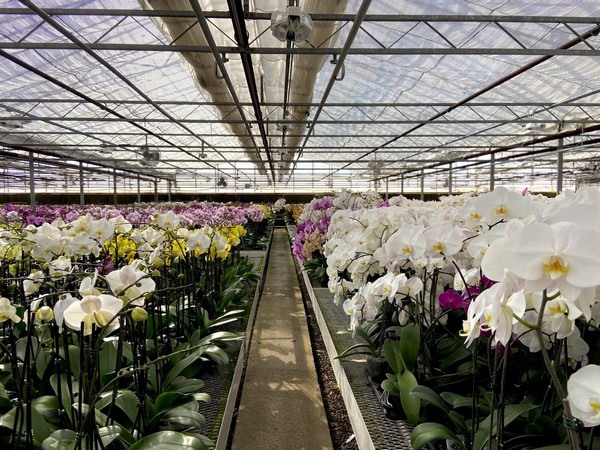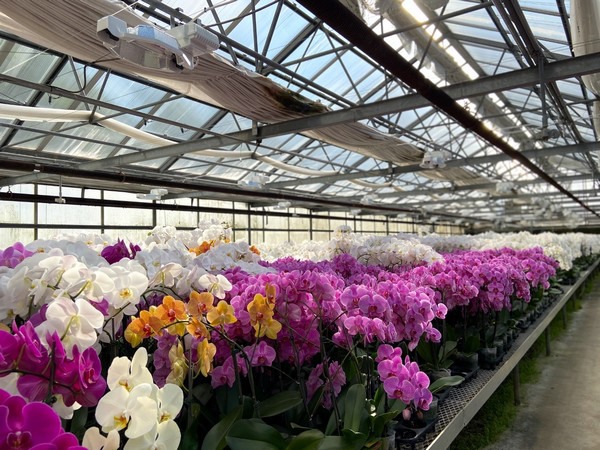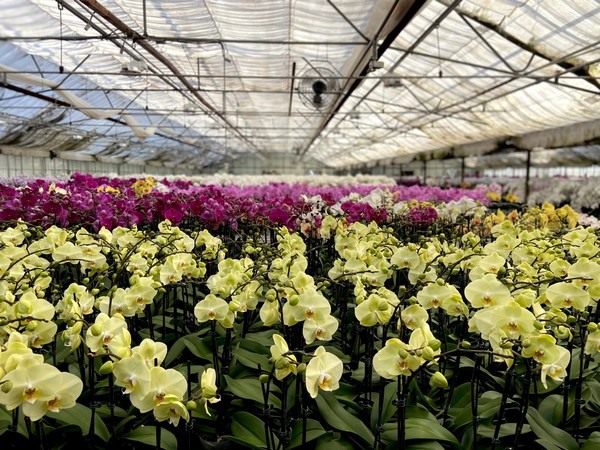Phalaenopsis orchids are the most popular orchid variety in North America, thanks to their low-maintenance care and long-lasting, beautiful flowers. At New Pao Tau Enterprises, their main focus is growing phalaenopsis orchids and they have been supplying households across North America for over 18 years with high quality, colorful flowers.

Pau Tao Enterprises’ main growing facility is located in Campbellville, ON, where they have 100,000 square feet of greenhouse space. Phalaenopsis orchids are an easy-to-care for, tropical houseplant, that requires bright, yet indirect light to thrive and flower. The process for growing orchids from beginning to finished product, can take up to 18-24 months depending on how big the customers want the orchid to be.
A unique aspect of Pau Tao Enterprises is that they manage a starting facility, located in Taiwan, where they propagate their orchids by tissue culture. After about a year of growth, they are sent to the Canadian greenhouse for their final 6-12 months where they are finished and shipped out. Phalaenopsis orchids are perfect for greenhouse production because unlike other orchid species, they can flower 365 days a year. This is because flowering depends on light intensity and photoperiod, unlike other varieties which have “seasons” and will flower based on the time of year. This makes it easy for growers to control flowering to ensure that every shipped plant has flowers and buds on it - since plants with flowers always sell.

Since phalaenopsis orchids depend on light to flower, having a high quality, dependable lighting system is integral to their operation in the fall, winter and spring months when light levels are low. Michael Pang, owner and grower at Pao Tau, had issues with his old magnetic ballast fixtures and decided to retrofit his greenhouses with P.L. Light Systems’ efficient and reliable electronic ballast NXT-LP 600W HPS luminaires. The decision to go with the NXT-LP (low profile) was because of the lower ceiling heights in their greenhouses, where lights are often hung only 3-4 feet above the plants. Having luminaires which won’t burn the crop and still provide excellent uniformity and light intensity, was key to the success of their lighting plan. After a season with the new luminaire installation, the growers have been very pleased with the results in increased plant performance and quality―along with improved light uniformity, intensity and efficiency compared to their old luminaires.

As you may know, orchids are in general a low light plant, however, maintaining balanced and uniform light levels is important for consistency and quality. In general, the growers have their luminaires on from September to March, when light levels are low. In the summer months, because of the high intensity sunlight, they use shading to control light levels. One of the great advantages to having luminaires in an orchid greenhouse, is that growers have the ability to control flowering with lighting. So when a shipment needs to be flowering in 2-4 weeks in winter months, growers can increase the light photoperiod―in conjunction with heat―to illicit flowering.
Before initially installing the HPS luminaires, Michael wanted to trial LEDs since they could help save on energy costs. Upon completion of the trial, the results showed there was little difference in plant performance between the LED and HPS luminaires, however since HPS luminaires are significantly cheaper than LEDs, and are able to pay for themselves much quicker, he decided to go with the HPS luminaires. In addition, heat from the HPS luminaires can help with heating costs and plant productivity in the winter since they are in a Northern climate.
For more information:
Pao Tau Orchids
paotau.com
Instagram
Facebook
P.L. Light Systems
T: 1.800.263.021
info@pllight.com
www.pllight.com
